Last Updated on April 9, 2022
6. Introduction to Linux – A Hands on Guide
By Machtelt Garrels (PDF, HTML; 215pages)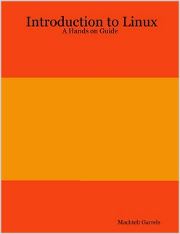
This guide was created as an overview of Linux, geared toward new users as an exploration tour and getting started guide, with exercises at the end of each chapter. For more advanced trainees it can be a desktop reference, and a collection of the base knowledge needed to proceed with system and network administration.
The book explores a wide range of topics including:
- Files and the file system, describing the layout of a Linux file system, file management, link types, file permissions, lost and hidden files
- Processes, learn about multi-user processing, multi-tasking, process types and attributes, how to control and schedule processes
- I/O redirection – the powerful mechanism of redirecting input, output and errors
- Using Text editors including a section on Vim
- /home
- Printers and printing: Learn how to format documents, preview, documents, print files, check on printer status, choose a good printer, troubleshooting printing problems
- Backup techniques: Make, query and unpack file archives, write media, make incremental backups, create Java archives, encrype data
- Networking
- Multimedia including playing CDs, copying CDs, video and television, and recording sound
7. Bash Guide for Beginners
By Machtelt Garrels (PDF, HTML; 165 pages)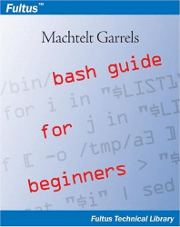
Everybody working on a UNIX or UNIX-like system who wants to make life easier on themselves, power users and sysadmins alike, can benefit from reading this book.
Explores:
- Bash scripts
- Writing and debugging scripts
- The bash environment: Shell initialization files, Variables, Quoting characters, Shell expansion, aliases
- Regular expressions
- sed stream editor
- awk programming language
- Conditional statements (if, if/then/else, if/then/elif/else, Nested if statements, Boolean operations)
- Writing interactive scripts
- Repetitive tasks
- Functions
- Catching signals
8. After the Software Wars
By Keith Curtis (PDF; 292 pages)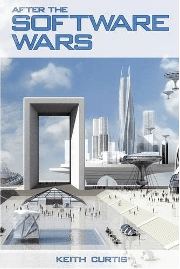
Given the technology that is already available, we should have cars that drive us around, in absolute safety, while we lounge in the back and sip champagne. All we need is a video camera on the roof, plugged into a PC, right? We have all the necessary hardware, and have had it for years, but do not yet have robot-driven cars because we do not have the software.
This book explains how we can build better software and all get our own high-tech chauffeur. It scrutinizes why free software is superior, implications for Google, the Java mess, patents and copyright, Vista, remaining challenges for free software, and many other things.
9. The Cathedral & The Bazaar
By Eric S. Raymond (PDF, XHTML, XML, Postscript; 260 pages)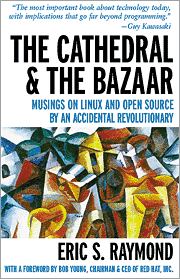
The Cathedral and the Bazaar is a book on software engineering methods, based on the author’s observations of the Linux kernel development process and his experiences managing an open source project, fetchmail.
The book contrasts two different free software development models:
- The Cathedral model of most of the commercial world
- The Bazaar model of the Linux world
Over the years, this work has had a profound influence on many existing open source projects adopting a Bazaar-style development model.
10. Free for All: How LINUX and the Free Software Movement Undercut the High-Tech Titans
By Peter Wayner (PDF, Zipped HTML, Palm PDB, HTML, ASCII text, XML; 340 pages)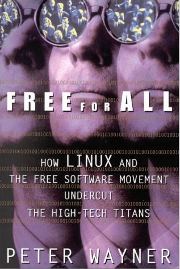
Like Eric Raymond’s The Cathedral and the Bazaar, Free for All outlines the arguments for leaving software source code open and free for anyone to tinker with. But Wayner’s account delves deeper into the politics of the movement, reading like a high-tech soap opera.
The book is available in a wide variety of formats.
Next Section: 20 of the Best Free Linux Books – Part 3
This article is divided into four parts:
Part 1, Part 2, Part 3, Part 4
 Read our complete collection of recommended free and open source software. Our curated compilation covers all categories of software. Read our complete collection of recommended free and open source software. Our curated compilation covers all categories of software. Spotted a useful open source Linux program not covered on our site? Please let us know by completing this form. The software collection forms part of our series of informative articles for Linux enthusiasts. There are hundreds of in-depth reviews, open source alternatives to proprietary software from large corporations like Google, Microsoft, Apple, Adobe, IBM, Cisco, Oracle, and Autodesk. There are also fun things to try, hardware, free programming books and tutorials, and much more. |

Next time you do a review of free Linux books you might want to include Linux Appliance Design. Originally from No Starch it is now free and available in both PDF and e-book formats. It is at https://librta.org
Thanks for the heads up Bob. I’ll certainly read Linux Appliance Design and will, of course, consider it for inclusion in a future article.
Are there any plans to release the book under an open source license?
If there are any Linux areas you’d like us to cover, do let us know!
Steve